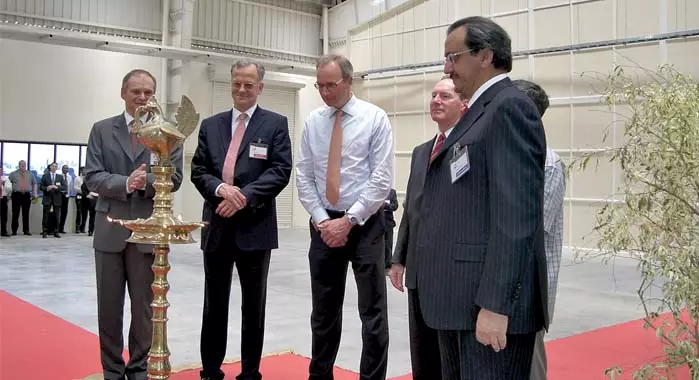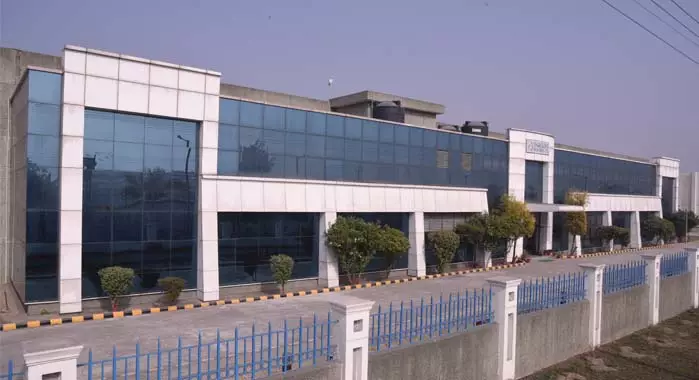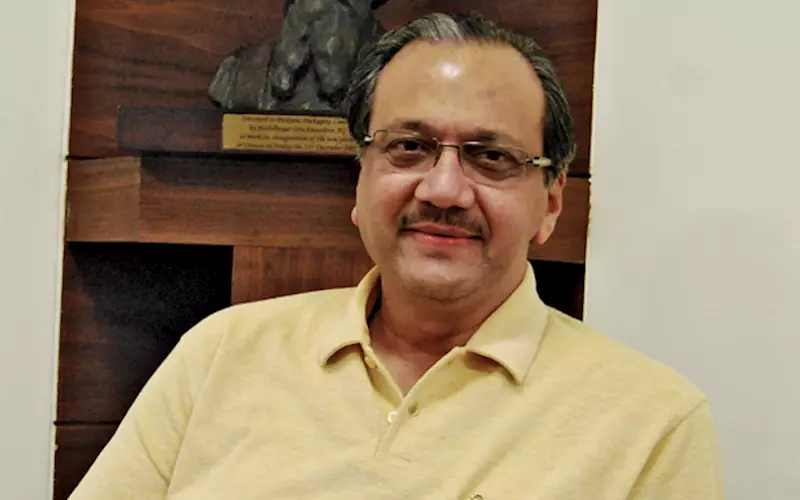Parksons Packaging: The game is changing
Ramesh Kejriwal decodes the growth plan at Parksons Packaging and talks about the firm's appetite to convert 50,000 tonnes by next year
12 Nov 2010 | By Samir Lukka
Ramu Ramanathan (RR): Parksons Packaging was a commercial print shop, specialising in playing cards. In 1996, you diversified into high-end packaging. In the last six years, the organisation has taken a quantum leap. Are you satisfied with the journey that you have taken?
Ramesh Kejriwal (RK): Yes, I can say that I am satisfied with the journey so far. Being a new entrant in the packaging arena in 1996, we had set certain goals and targets for the pace at which we wanted to grow. Today, we have been able to achieve those. We wanted to ensure that this growth came from deploying the right technology at multiple locations, enabling us to serve our customers better. With our plant in Chakan, Pune which we set up in 2007 and now with Rudrapur in the North, we have been able to do that. I believe that the journey so far has allowed us to create a sound platform from which to launch our next phase of growth. Therefore, I am happy about it.
RR: There was talk of a plant in East and South India?
RK:Our strategy is to continuously expand our geographical reach. The focus is clearly to be closer to the customer and service them at all their sites with the same consistent high quality. Therefore, we are always exploring new areas to expand to, including the South. However, we would set up a plant only when we truly believe that there is a market demand that justifies the investment. As you are aware our products require certain minimum infrastructure and capacity and therefore, any new expansion needs to be well thought out. Fortunately, today with three plants, especially our plant in Chakan, we are able to service customers in the South quite well.
RR: What is an ideal minimum capacity level?
RK: Unless you have a plant for 1,000 tonne capacity per month, it is not worthwhile to go in for investment in technology. Because there are things like overheads in terms of people and infrastructure.
RR: In an interview, you anticipated a shift in business from commercial printing to other areas. In 1995, you re-designed the corporate environment in the Lalbaug office in Mumbai where we are seated today.
RK: Absolutely. There was a sentiment that print production in Mumbai is unviable, both in terms of availability of space and price. Today, the cost of space is very high and it becomes impossible to justify the kind of business that we are doing, especially in a high growth environment. This is not the case outside Mumbai, where you can buy and build real estate at lower rates.
RR: In Daman, workflow has been a key to augment your supply chain management.
RK: Daman was our first real large-scale packaging plant. While we did have a workflow planned, I think, we did not structure it adequately for growth. Also, space was a constraint. We, therefore, had to put in extra efforts to control our supply chain with better systems to ensure that we get the maximum out of what we have.
RR: Was that the basic learning experience for you. The Chakan plant adheres to a linear-workflow system from the raw materials section to the finished goods section.
RK: Daman has been a great learning curve. We have learnt that it is very important to plan well for growth. One needs to balance extravagance with a calculated risk to provide for the future. Therefore, when we wanted to build a plant in Pune we ensured we had enough land to expand without it becoming a hindrance. Today in Chakan, we already have created an infrastructure for four lines. Of which we have three lines right now. We can, however, scale upto eight lines. I think investments needs to be in sync with the company's overall vision and growth strategy. Ideally a single plant should be able to convert about 3,000 tonnes per month.

Inauguration of the Chakan plant in 2007
RR: What about the plant in Rudrapur?
RK: At Rudrapur we had a very aggressive deadline to meet. Also, space for the quick implementation of a plant is not readily available. We have, therefore, started out smaller with a plant which can do 1,200 to 1,300 tonnes of conversion per month. This is not an ideal size ultimately but not a bad starting point either for us in North India.
RR: What is Parksons' conversion in tonnage?
RK: About 3,500 tonnes per month inclusive of all plants. We are aiming to be converting 50,000 tonnes next year. As far as I know, apart from ITC, which is a very large convertor, TCPL and Borkar are among the top convertors of paperboard.
RR: Does the office in Mumbai do a majority of the pre-press work?
RK: We have a pre-press set up at our office in Mumbai and also at each of our plants. Therefore, while we continue to do quite a bit of pre-press work in Mumbai, our plants are also becoming independent.
RR: And so, who does a client in the North approach? The Rudrapur plant or the centralised team?
RK: We have opened up regional offices all over India to be closer to our client. Today, we have offices in Delhi, Chennai, and Kolkata. Say, we have new customers from North, they can approach our regional office which is based in Delhi. In any case, our regional offices are supported by our head office in Mumbai where a central co-ordinator works closely with them. With the implementation of SAP, communication and the exchange of data has become simpler.
RR: How do you maintain and ensure the level of expertise that you have created for pre-press, across all the units?
RK: We have the same Esko workflow across all our three units to maintain one single standard. Also, we ensure that all our locations follow the same procedures and systems. We impart training for all the team members to ensure consistency in output across all locations.
RR: In the past few months, I've been travelling to a lot of small and medium converting units. I've tried to understand the difficulties which are hampering their growth. There seem to be two reasons: a) lack of vision; and b) raising finance for new investment. Most of them are overwhelmed by the cost of cash which is required to upgrade their plant. Any advice?
RK: Good financial management and practices are key factors. In a capital intensive business it is important to focus on bottomline and not only topline. The business has to generate enough cash to plough it back into the business. It is important to have clear benchmarks of debt/equity ratio. Debt is the cheapest form of financing but it also brings with it risks. These risks need to be carefully calculated and understood. My advice would therefore be, to continuously focus on improving profitability and cash generation.
RR: But packaging remains a low-margin business ...
RK: Yes, it is a relatively low margin business. However, there are some companies that are okay working with even lower margins only to boost topline in the short term. As a result, they find themselves strapped for cash which becomes a major roadblock to future growth. If companies do not manage their funds properly, we will see a lot of companies stagnating and having to shut down their business.
RR: What about risk-appetite?
RK: Just taking the risk is not enough. As mentioned earlier, the risk needs to be fully understood, calculated and only then embarked upon. The timing of the risk is extremely critical. Also, the risk needs to be guided by a clear vision and strategy. Temple Packaging is a good example. They were working from Mumbai with just one machine but took the right decision; or as you say, the risk and forayed into the pharma segment. Their timing was right. And today they are successful and are doing very well.
RR: At every seminar we hear about the growth in Indian economy, GDP, FMCG boom, capital flow, etc. How much do these intangibles actually trickle down into real business?
RK: The economy and GDP growth is fundamental. Without the economical growth of the sector that one is catering to, there will be no growth in business. It does not mean that if the economy grows, everybody will grow. In every industry there are players who will make high, average and low profits. It depends upon the profile of the customers that you are handling and the way in which you are managing the business. One also has to consider business principles about being in the right location, right market segment, right customer segment, and the policies adopted for business. Whether you are seeking volume business and/or better margin. In a growing economy, the normal tendency among converters is to look at the top-line and rush for the volume without considering factors like profitability of that business after two to three years, as well as return on investment. This is dangerous.
RR: But what is the sales/investment ratio? Even at 25% margin, after the bank is paid, the company has a 12-13% margin. Is that a good return on investment?
RK: A 2:1 sales/investment ratio that earns you a net margin of 10-12% is quite good for this kind of business.
RR: Margins for packaging converting are low. Is this specific to India or also the developed countries?
RK: Ours is a service-oriented industry. It is not a unique product that a packaging converter is creating. A majority of the products, about 80 to 90% of them, can be manufactured by any converter. Today, customer loyalty is at its lowest. He can switch over if he gets the same job done by some other converter at 5% lower cost. These factors make packaging converting a low-margin and competitive game, worldwide.
RR: This baffles me. Since the amount of work that goes on the shopfloor is not known to the clients. Recently I attended a food packaging seminar where the refrain among brand leaders was: how to bring down this cost of packaging...
RK: I feel it will never be a high-margin business. Having said that there are things one can do to get your dues paid and earn decent margins. Like having a kind of specialisation or a segment where you can give better quality, lower lead-time, etc. If you help reduce the client's overall cost they should have no reason not to pay for your services. Also, innovation is key. If innovation in packaging helps the client sell more of their product and make more money, why would they not want it and not pay you for it? As a company, this is a huge focus area for us and the objective with which we have launched DesignPark.
RR: What is the Design Park?
RK: Design Park is our design and innovation centre. This division works like a separate entity and consists of a mix of people from varied backgrounds including researchers, creative designers, etc. The objective is to think beyond the regular and design solutions that are completely fresh and new. Design Park works proactively to create solutions that are in sync with the overall marketing strategy of brands. Put simply, the aim is to collaborate with clients to create packaging that acts as a competitive advantange. We are also generating our own IP through this division.
RR: Any example of an innovation?
RK: We came across an interesting example of a patented design for a pizza box. The problem was: the pizza inside a normal box used to become soggy by the time it reached the end customer. This is because of the moisture created by steam on the inside. Now, this company innovated to build a system which allows the steam to pass out and prevent the moisture from affecting the freshness of the pizza. This is a clear case where the brand owner can ensure that the consumer receives a superior product and one that is better than the competition. Ultimately, any innovation should have commercial feasibility.
RR: You continue to be aggressive with your presence in shows like Interpack...
RK: We have had good success at Interpack previously. However, the show is becoming very large. As a result the visitors are not focussed and also find it difficult to cover the entire show in even 3-4 days. We believe that strategically it may be better to participate in more focussed and smaller shows rather than a very big fair. We have heard of others who have benefitted from this approach. For example, Utility PrintPack at Luxe Pack which is a niche exhibition for luxury packaging.
RR: What is the concern of the print buyer? Cost and pricing is a concern – what else do they seek?
RK: From a print buyer's perspective, two things have become very important. One is the consistency factor, both in terms of structure and graphics. Graphics, because of the modern retail that is growing, and structure, because of the modern packing machines that they are using. This is where the organised players who are using the right technology and having a good knowledge of these two factors have an advantage. Because not many companies can consistently produce the colour of the product on the shelf or the functional aspect of handling the packed material. Secondly, print buyers from big multinational companies require large volumes, which is not possible for everyone to cater to. Scale is very important not only for economies but also to give the client the comfort that if they have a large requirement, it will be serviced quickly and with the right quality product. Buyers who are growing and expanding want to see a commitment in new technology and capacity. Some of the big players have built up this capability. Therefore, they have an upper edge with the print buyers.
RR: Technology is not neutral. It is different from company to company. You have surprised many of us with interesting choice of technology. How do you select your technology?
RK: It's a mix of technology to bring about the value for our money. For printing, we have Heidelberg and for converting we have Bobst. We have some Chinese machines. When we required a one stop solution with dedicated UV, we installed a KBA. When we went with Manroland it was a strategic decision. We felt that over a period of time if we keep on investing continuously in new machinery it has to get a new value to our business. Certain technical things that we wanted within that segment had been our choice. Like the Heidelberg Due Press CD 74 at Chakan which was the first in India. Today Manohar Packaging has installed a similar machine. But when we took the decision, it was to gain an upper hand in technology and provide solutions. Then we invested in two six-colour Roland Hi Print 700, one UV and the other a non-UV, at Rudrapur.
RR: What about post-press? Traditionally, it is ignored by converters? And so, on the one hand one has the best kit but things like stripping tools, die-making create bottlenecks...
RK: That is because availability is an issue. In India, there are couple of companies, but it is not upto Marbach standards. Printing, traditionally has been a manufacturing process which people have learnt by direct hands-on experience on the shopfloor. But converting is more recent and demands thorough knowledge for technology. One might be able to match the quality, but there are factors that hinder growth like lower utilisation of the equipment technology, both because of the tools available and the lack of knowledge.
 Parksons Packaging’s 75,000 sqft unit in the special economic zone in Pantnagar
Parksons Packaging’s 75,000 sqft unit in the special economic zone in Pantnagar
RR: Parksons has three plants in India. You are dealing with three state governments. Has it become easy to do business in India?
RK: Yes, it has. Except for the acquisition of land for the business. To procure government land, you have to deal with a lot of bureaucracy. However, once you buy the land, getting clearances and putting up new machines is not very tough. If you are clear about the requirement of your business and put it on paper for clearances without manipulating it, I don't feel there is any problem.
RR: What's the growth projections you have for paper and paperboard packaging?
RK: The folding carton industry in India, should continue to grow at 15% CAGR for the next five to seven years.
The above Q&A session is a part of a special packaging supplement included in the printed issue of PrintWeek India magazine dated 5 November 2010.












 See All
See All